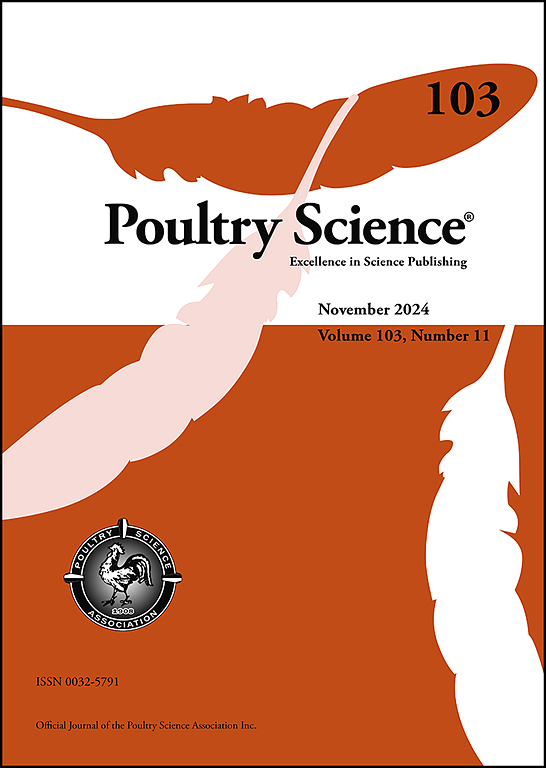First establishment of a Duck Model for in vivo and in vitro studies of West nile virus (Kunjin subtype)
IF 3.8
1区 农林科学
Q1 AGRICULTURE, DAIRY & ANIMAL SCIENCE
引用次数: 0
Abstract
We present a method for constructing a Kunjin virus (KUNV) infectious clone capable of stable proliferation in bacterial systems. This KUNV infectious clone successfully produces infectious viral particles within host cells. In vitro, the recombinant virus demonstrates the ability to replicate in primary duck cells and induces 100 % mortality in duck embryos. In vivo, the recombinant virus exhibits virulence in our established duckling model, leading to clinical signs such as hepatic haemorrhage, splenomegaly, and pancreatic haemorrhage. Furthermore, the recombinant rKUNV induced a mortality rate of 20 % in ducklings, thereby providing a robust model for studying the virus’s pathogenicity in horses or human. To expand upon this foundation, we have developed KUNV replicons tagged with luciferase and mCherry, which confirm successful KUNV replication in primary duck cells and hold potential for future antiviral drug screening. The KUNV reverse genetics system, alongside the in vitro and in vivo duck infection models, offers a valuable platform for identifying pathogenic factors relevant to KUNV infection in humans, horses, and avian species. Additionally, this system could be instrumental in advancing vaccine development and antiviral drug research against KUNV.
西尼罗病毒昆津亚型体内外实验鸭模型的首次建立
提出了一种构建能在细菌系统中稳定增殖的昆津病毒(KUNV)感染性克隆的方法。该KUNV传染性克隆成功地在宿主细胞内产生感染性病毒颗粒。在体外实验中,重组病毒能够在鸭原代细胞中复制,并在鸭胚胎中诱导100%的死亡率。在体内,重组病毒在我们建立的小鸭模型中表现出毒力,导致肝出血、脾肿大和胰腺出血等临床症状。此外,重组rKUNV在雏鸭中诱导了20%的死亡率,从而为研究该病毒对马或人的致病性提供了一个强有力的模型。在此基础上,我们开发了用荧光素酶和mCherry标记的KUNV复制子,证实了KUNV在原代鸭细胞中的成功复制,并为未来的抗病毒药物筛选提供了潜力。KUNV反向遗传系统,以及体外和体内鸭感染模型,为识别与人、马和鸟类的KUNV感染相关的致病因素提供了一个有价值的平台。此外,该系统可能有助于推进针对KUNV的疫苗开发和抗病毒药物研究。
本文章由计算机程序翻译,如有差异,请以英文原文为准。
求助全文
约1分钟内获得全文
求助全文
来源期刊

Poultry Science
农林科学-奶制品与动物科学
CiteScore
7.60
自引率
15.90%
发文量
0
审稿时长
94 days
期刊介绍:
First self-published in 1921, Poultry Science is an internationally renowned monthly journal, known as the authoritative source for a broad range of poultry information and high-caliber research. The journal plays a pivotal role in the dissemination of preeminent poultry-related knowledge across all disciplines. As of January 2020, Poultry Science will become an Open Access journal with no subscription charges, meaning authors who publish here can make their research immediately, permanently, and freely accessible worldwide while retaining copyright to their work. Papers submitted for publication after October 1, 2019 will be published as Open Access papers.
An international journal, Poultry Science publishes original papers, research notes, symposium papers, and reviews of basic science as applied to poultry. This authoritative source of poultry information is consistently ranked by ISI Impact Factor as one of the top 10 agriculture, dairy and animal science journals to deliver high-caliber research. Currently it is the highest-ranked (by Impact Factor and Eigenfactor) journal dedicated to publishing poultry research. Subject areas include breeding, genetics, education, production, management, environment, health, behavior, welfare, immunology, molecular biology, metabolism, nutrition, physiology, reproduction, processing, and products.
 求助内容:
求助内容: 应助结果提醒方式:
应助结果提醒方式:


